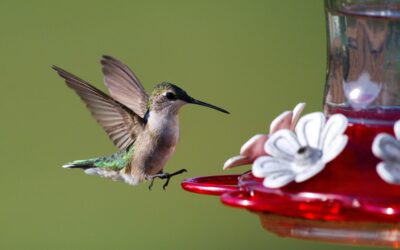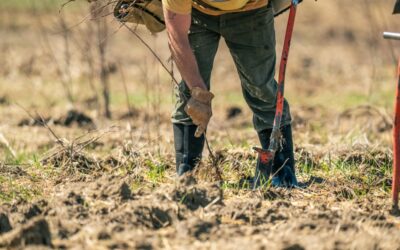Opportunities to add to public lands are very rare. Because you’ve made the Federation stronger, we were able to connect the state and a landowner to nearly double the protected area of a rare dragonfly habitat.
Acquisition Protects Rare Dragonfly Habitat
Tennessee Wildlife Federation works directly in many areas—from youth engagement to being the leading voice on the Hill for Tennessee’s wildlife, water, and wild places. That broad reach also allows us to bring together people, organizations, and resources to make progress for wildlife that might not happen otherwise. That’s what a federation does, after all.
This is the case with the recent addition to Tennessee Department of Environment and Conservation’s (TDEC) Walker Branch State Natural Area.
The dragonflies and damselflies at the Walker Branch site were first surveyed in 1979. Its value was recognized and, in 1997, the state designated it as a state natural area. Situated in Hardin County, Walker Branch marks the landscape’s transition between West and Middle Tennessee.
>>READ MORE: Certify your garden for wildlife
It has fascinating geography. Steep, abruptly rising hills form drier uplands. The slopes are dotted by seeps—fresh groundwater that emerges as small pools and trickles of water. These seeps then collect into creeks flowing in and out of the surrounding wetlands.
“For a naturalist, this area is just a paradise,” said Allan Trently, manager of Walker Branch.
In that paradise are 407 plant species, 132 bird species, 58 butterfly species, and 45 dragon and damselfly species. It also includes rare species such as the least bittern, American bittern, and lark sparrow.
But the 275-acre site didn’t include the whole fragile ecosystem. Unfortunately, it is very rare to be able to buy the property needed to round out and conserve a State Natural Area—or any other public land, for that matter.
That’s where Tennessee Wildlife Federation came in.
“We were partnering with the state on multiple projects when they expressed interest in the 185-acre property next to Walker Branch,” said Chris Roberts, director of the Federation’s Habitat Restoration program. “I was able to draw on the Federation’s connections to bring the parties together.”
Roberts, who is directing several habitat conservation projects in the area, was able to connect TDEC with the owner of the property.
“With state natural areas, we often welcome additions to the sites as buffers or when the nearby property has biological value,” said Roger McCoy, director of the Division of Natural Areas, Tennessee Department of Environment and Conservation.
After nearly three decades, expanding Walker Branch State Natural Area is a reality, ensuring the health of the watershed, and safeguarding the diverse plant and animal life. The deal agreement came together in a year and will nearly double the protected area.
“I do really appreciate the interaction we have with Tennessee Wildlife Federation,” said McCoy. “They brought us together with this landowner. They made this addition possible.”
Featured photo by Courtney Meeks




